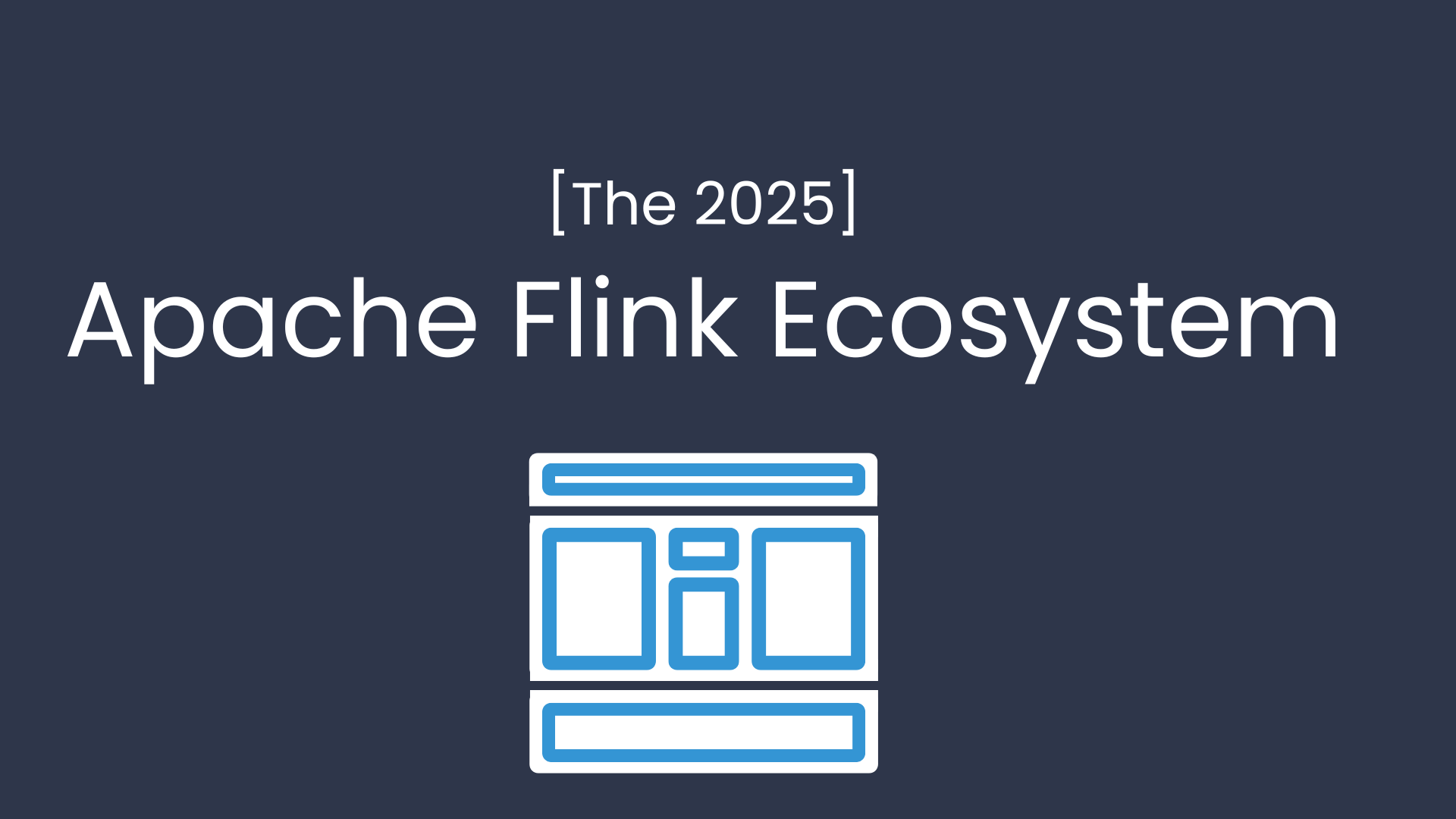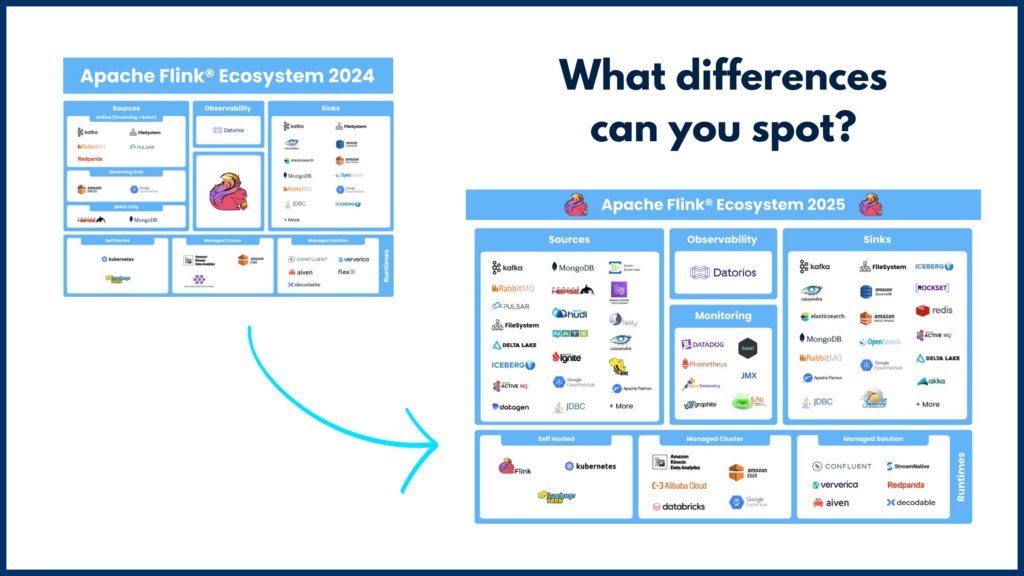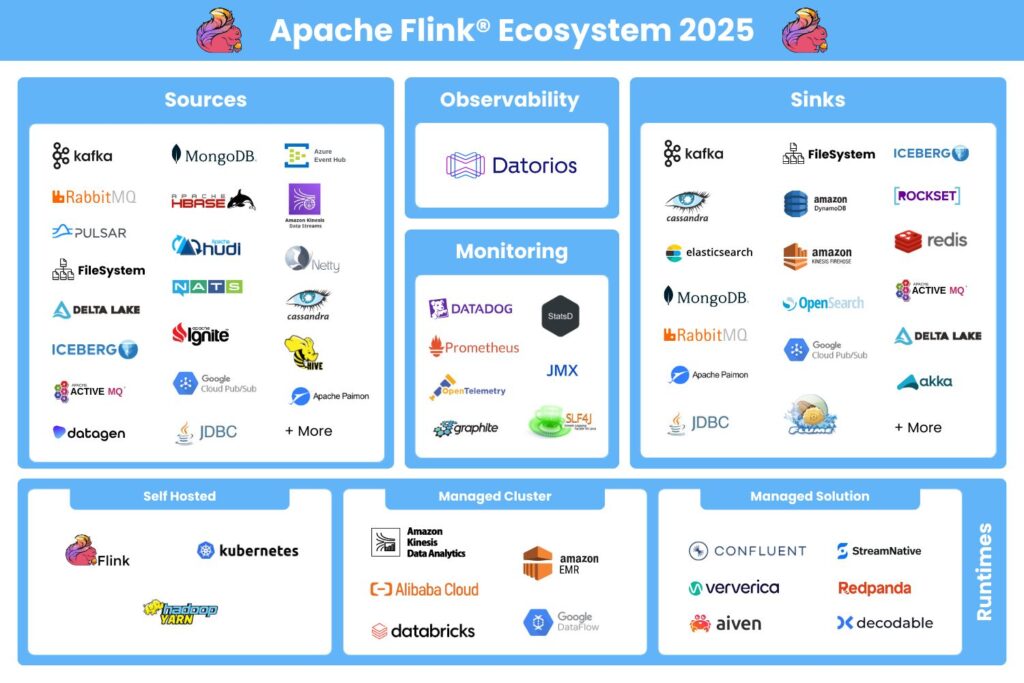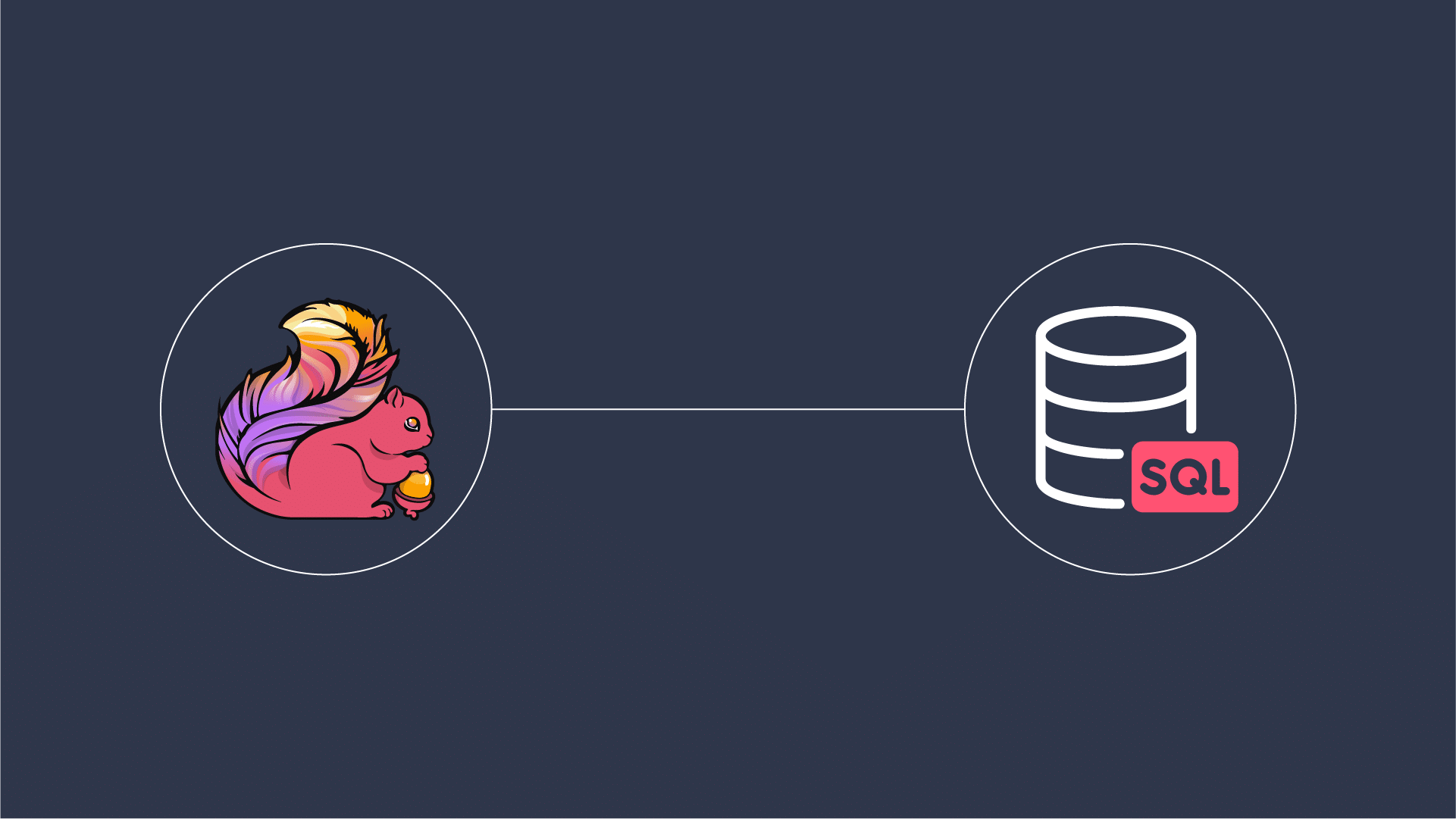
Governance, Observability, and Troubleshooting: Let’s Talk About Your Real-Time Data Blind Spot
If you’re like most organizations, you currently have real-time data processing projects built, under construction, or planned. The


A year ago, we shared a map of the Apache Flink ecosystem, and the response was overwhelming. Developers, architects, and data engineers engaged in discussions about runtimes, observability, and missing integrations – all pointing to a rapidly growing and evolving ecosystem. Today, we’re back with an updated map. the Apache Flink Ecosystem 2025, showcasing the latest advancements and deeper integrations that make Flink the backbone of real-time data processing.

In 2025, real-time data isn’t a luxury – it’s a necessity. Businesses demand faster insights, higher data quality, and more resilient pipelines. As a result, Apache Flink continues to dominate the real-time streaming space, offering more flexibility and scalability across various industries.
Let’s break it down further.

With Flink 2.0 on the horizon, everything is moving toward the Source API, creating a more unified ecosystem. Whether batch or streaming, these sources are at the heart of real-time data processing:
More sources mean greater interoperability, making it easier for data teams to ingest and process real-time data at scale.
Once processed, data needs to be stored or further analyzed. The list of Flink sinks continues to grow, ensuring compatibility across different storage solutions and analytics platforms.
Whether it’s real-time analytics, machine learning models, or operational dashboards, Flink’s broad set of sink integrations ensures low-latency, high-throughput data delivery.
Apache Flink’s flexibility extends to how it’s deployed. Whether self-hosted or fully managed, companies have multiple options to balance control, cost, and scalability.
With managed solutions continuing to evolve, startups and enterprises alike can focus on real-time data processing without the overhead of infrastructure management.
As real-time data pipelines grow in complexity, observability is no longer optional – it’s essential. Companies need real-time insights into pipeline performance, bottlenecks, and errors to maintain operational resilience.
With the rise of regulatory pressures and increasing cost sensitivity, companies are prioritizing real-time data visibility and explainability to make better business decisions.
The Apache Flink ecosystem isn’t just expanding – it’s solidifying its position as the leading real-time data processing engine. Whether you’re building streaming analytics, fraud detection, machine learning pipelines, or financial models, Flink’s deep integrations and ecosystem growth make it the go-to framework for real-time decision-making.
This map is our way of capturing the fast-moving world of Apache Flink. If you think we missed an important integration or trend, please let us know.
Stay ahead in real-time data observability with Datorios.

If you’re like most organizations, you currently have real-time data processing projects built, under construction, or planned. The

Introduction At Datorios, we are always pushing boundaries to empower real-time data processing at scale. Today, we are

Apache Flink is a powerful, open-source stream processing framework for real-time and batch data processing. Flink-as-a-Service operations provide
Fill out the short form below